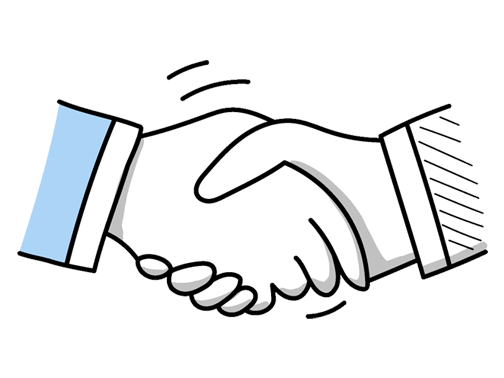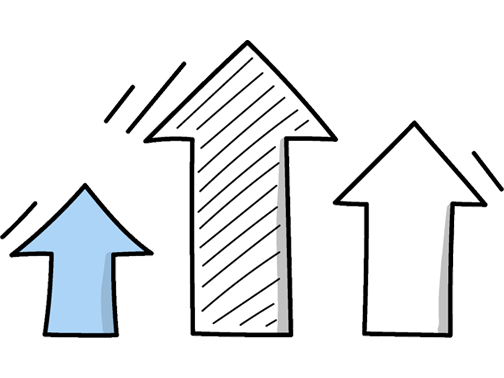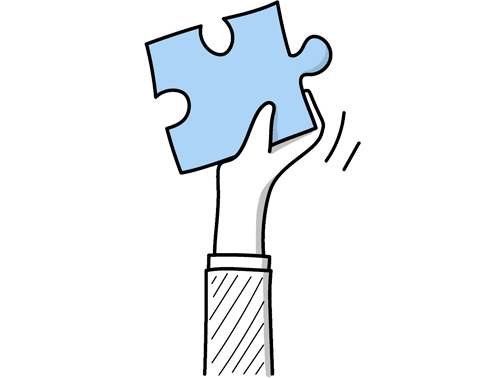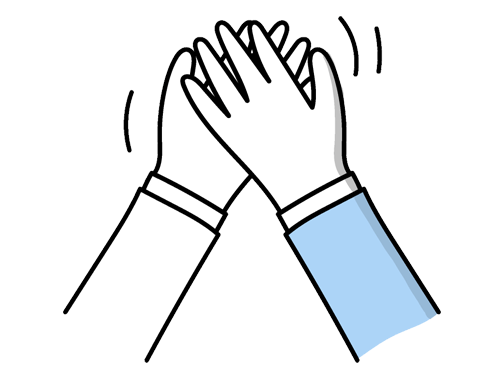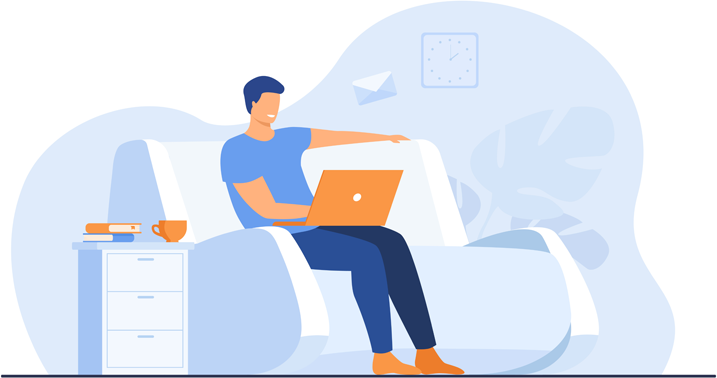Exhibit Designer Interview Questions (2025 Guide)
Find out common Exhibit Designer questions, how to answer, and tips for your next job interview
Practice Interviews Online - Identify your strengths and weakness in a realistic Exhibit Designer mock interview, under 10 minutes
Practice Now »Exhibit Designer Interview Questions
Questions like this assess your technical skills and how you use software tools to bring exhibit designs to life. In your answer, mention the specific 3D modeling and rendering programs you know, describe how you applied them to create detailed exhibit models, and explain how your renders helped visualize the final design.
Example: I’ve worked extensively with software like SketchUp and Rhino to create detailed 3D models for exhibits. This hands-on experience helped me address spatial challenges and visualize designs before build. I’m comfortable using rendering tools such as V-Ray to produce realistic images, ensuring the final look aligns with the concept. It’s rewarding to see how accurate renders can communicate ideas clearly to clients and the build team.
Hiring managers ask this to see if you value teamwork and can create a positive space for creative exchange. You need to say that you encourage open communication and respect diverse ideas to ensure everyone feels valued and motivated.
Example: Creating a collaborative atmosphere means encouraging open dialogue and respecting everyone’s ideas, no matter their role. I like to organise regular check-ins where we share progress and challenges, which often sparks new creative solutions. For example, on a recent project, this approach helped us merge different perspectives seamlessly, resulting in a more engaging exhibit. It’s about building trust so the team feels confident to contribute and experiment.
Employers ask this to see if you prioritize safety and understand engineering principles in your designs. You need to say that you collaborate with engineers, follow material specifications, and conduct thorough testing to ensure stability and safety for users.
Example: I start by collaborating closely with engineers to review materials and loads, ensuring everything meets safety standards. When designing, I consider wear and public interaction, like how visitors might touch or lean on displays. In a recent project, we tested prototypes to identify weak points early. This hands-on approach helps me create exhibits that are not only visually engaging but also safe and durable for everyone.
Employers ask this to see how you approach problems and use creativity under constraints. You need to describe a specific challenge, explain your innovative idea clearly, and highlight the positive outcome it achieved.
Example: During a recent project, I faced tight space constraints for an exhibit showcasing local history. To maximize engagement, I designed multi-layered panels that unfolded to reveal hidden artifacts and stories. This approach not only used the limited area effectively but also invited visitors to interact physically with the display, making the experience both educational and memorable. It was a creative way to turn a challenge into an immersive opportunity.
What they want to know is if you consider inclusivity and different user needs in your design process. You need to say that you research diverse audience requirements and incorporate universal design principles to make exhibits accessible to everyone.
Example: When designing exhibits, I focus on clear visuals and straightforward language to engage everyone. I consider physical access, like wide pathways and seating, and include tactile elements or audio guides for those with different needs. For example, in a recent project, incorporating braille labels and interactive displays helped make the experience inclusive and enjoyable for visitors of all abilities. It’s about creating a space where everyone feels welcome.
What they want to understand is how you use experimentation to discover innovative solutions and improve your designs. You need to say that experimentation allows you to test ideas quickly, learn from results, and refine your exhibits for better visitor engagement.
Example: Experimentation is central to my design process; it allows ideas to evolve organically. For example, when designing an exhibit on local history, I tested different layouts and materials to see what engaged visitors most effectively. This hands-on approach helps me discover unexpected solutions and refine concepts, ensuring the final exhibit feels both meaningful and immersive. It’s about staying curious and open to where the design might lead.
This question helps the interviewer understand how you collaborate with clients and adapt your designs to meet their needs. You should say that you actively listen by scheduling regular feedback sessions, incorporate their input into revisions, and balance their suggestions with core design principles to ensure the project stays aligned with its goals.
Example: When working with clients, I make a point to really listen and understand their thoughts, asking questions to clarify where needed. I then carefully reflect on their input, blending it with core design principles to create solutions that satisfy both their vision and practical needs. For example, on a recent museum project, incorporating visitor flow feedback helped refine the layout while keeping the exhibit engaging and accessible.
Questions like this assess your ability to maintain clear, consistent communication to align the client's vision with the design outcome. You need to say you prioritize regular updates, active listening, and adapting your approach based on client feedback to ensure their expectations are met.
Example: I make it a point to keep clients involved at every stage, whether through regular updates or informal chats to understand their evolving vision. For example, I often share sketches early on to get their feedback and adjust accordingly. This open, ongoing dialogue helps build trust and ensures the final design truly reflects their goals while avoiding surprises.
Interviewers ask this question to see if you can create designs that are both visually engaging and practical for users. You need to say that you consider the purpose and audience of the exhibit first, then carefully choose design elements that enhance user experience without sacrificing style.
Example: Balancing aesthetic appeal and functionality is about understanding the story you want to tell and how people will interact with the exhibit. I focus on clean designs that draw visitors in but also guide them intuitively through the space. For example, in a recent project, we used lighting and clear signage to create a visually striking display that also made navigation straightforward and comfortable. It’s always about creating an experience that feels both engaging and easy to explore.
Employers ask this question to assess your ability to manage complex projects involving diverse groups and ensure smooth collaboration. In your answer, clearly describe how you organized tasks and aligned schedules across teams, communicated regularly to keep everyone informed, and proactively solved problems when challenges arose.
Example: In my previous role, I managed several teams working on a large exhibition, ensuring everyone was clear on deadlines and priorities. Regular check-ins helped me address issues early, like when design and logistics needed realignment. I focused on clear, open communication to keep all parties engaged and adaptable, which helped us navigate challenges smoothly and deliver the project on time.
This question assesses your ability to enhance visitor engagement through technology while maintaining design coherence. You need to explain how you select multimedia based on the exhibit’s story and audience, ensuring it complements rather than overwhelms the physical space.
Example: When incorporating multimedia into exhibits, I focus on enhancing the visitor’s experience without overwhelming them. For example, I’ve used subtle soundscapes and interactive touchscreens to engage different senses and encourage exploration. It’s about blending technology seamlessly with the physical space, ensuring each element supports the story and invites visitors to connect with the content in meaningful ways.
Interviewers ask this to see if you can stay calm and effective when things don’t go as planned. You should say you identify risks early, adapt your plans flexibly, and communicate clearly with your team and clients to keep the project on track.
Example: When unexpected challenges come up, I stay calm and assess the situation quickly to find practical solutions. For example, during a recent exhibit redesign, last-minute changes to the gallery layout meant rethinking the display flow, so I worked closely with the team and kept the client informed throughout. Staying open to new ideas and maintaining clear communication helps keep everyone aligned and the project on track, even when things don’t go as planned.
Questions like this assess your ability to balance creativity with financial discipline, ensuring the project stays impactful without overspending. You need to explain how you prioritize key design elements, track costs carefully, and find innovative, cost-effective solutions to maintain quality within budget limits.
Example: When working within a tight budget, I focus on identifying the core elements that will have the biggest impact and allocate resources accordingly. I keep a close eye on expenses throughout the project to avoid surprises and stay flexible, finding creative alternatives that don’t compromise the overall design. For example, using modular components can reduce costs while still delivering a polished, engaging exhibit.
Employers ask this question to see how you communicate complex design concepts clearly to people without technical backgrounds. You need to explain that you use simple visuals, stories, and analogies to make your ideas relatable and ensure everyone understands the value of your design.
Example: When sharing design ideas with non-technical stakeholders, I focus on clear visuals and storytelling. I use simple sketches, 3D models, or mood boards to bring concepts to life. Explaining the visitor experience helps them connect emotionally with the project. For example, in a recent exhibit, I walked the team through a virtual walkthrough, which made the design tangible and sparked meaningful feedback.
What they want to understand is how you use storytelling to make exhibits more engaging and memorable by blending creative narratives with practical design elements. You should explain a specific project where you used a storyline to guide visitors and describe how your design choices supported that narrative, including any adaptations you made based on visitor feedback.
Example: When designing exhibits, I focus on crafting a clear narrative that guides visitors through the space, using visuals and spatial layout to bring the story to life. For example, in a recent project, subtle lighting and interactive elements helped visitors connect emotionally, which I refined based on their feedback. This approach ensures the experience feels both engaging and meaningful, blending creativity with practical design choices that support the overall message.
Hiring managers ask this to see how you maintain creativity and adapt to new trends. You need to say that you seek inspiration from diverse sources and regularly experiment with new materials and techniques.
Example: I find inspiration in a mix of everyday experiences and research—visiting galleries, reading about new materials, or simply observing how people interact with spaces. For example, a recent trip to a local museum sparked ideas on flow and engagement that I adapted in my last project. Staying curious and open to different perspectives helps me keep designs fresh and relevant.
What they want to know is if you have the technical skills to efficiently create and visualize exhibit designs. You need to mention relevant design software like AutoCAD, SketchUp, or Adobe Creative Suite, showing your familiarity with tools that enhance both creativity and precision.
Example: I’m comfortable using a range of design software to bring exhibits to life. Primarily, I work with AutoCAD and SketchUp for precise layouts and 3D modelling. I also use Adobe Creative Suite—especially Illustrator and Photoshop—to refine visuals and presentations. These tools help me translate concepts into detailed, engaging designs that resonate with diverse audiences. For example, in my last project, SketchUp was key to visualizing the space effectively before fabrication.
This interview question helps the employer understand how you stay organized and manage deadlines, which are crucial for delivering exhibits on time. You need to say that you use project management tools like Gantt charts or software (e.g., Trello, Asana) and regular check-ins to monitor progress and adjust plans as needed.
Example: I usually combine clear timelines with regular check-ins to keep projects on track. For example, I use simple digital tools like Trello to map out stages and deadlines, which helps the team stay aligned. Frequent updates allow us to spot any delays early and adjust priorities, ensuring we deliver on time without compromising quality. Staying flexible and communicative is key throughout the process.
Interviewers ask this question to see if you can accept and use feedback effectively, which is crucial for collaboration and improving your designs. You need to say that you listen carefully without interrupting, respond professionally, and give an example of how you adapted your work based on feedback to maintain good relationships.
Example: I see feedback as an essential part of the creative process. When clients or team members share their thoughts, I listen carefully and consider how their input can improve the exhibit. For example, in a past project, a client’s suggestion led me to rethink the layout, which made the space more engaging. I always stay respectful and open, aiming to build trust and strengthen collaboration throughout the project.
Hiring managers ask this question to see how you handle complex projects with many moving parts and tight deadlines. You need to explain how you organize tasks by urgency and impact using tools or lists, monitor progress with regular check-ins, and communicate clearly with your team and clients to stay aligned and adjust plans as needed.
Example: When working on a large exhibit, I break down the project into clear milestones, focusing first on elements that impact the overall timeline most. I keep track using regular check-ins, so any delays are spotted early and plans can shift accordingly. Clear communication with the team and clients ensures everyone knows what’s expected, preventing surprises and keeping the project moving smoothly towards deadline.
This interview question aims to assess your commitment to continuous learning and staying current in a rapidly evolving field. You need to say that you actively follow industry publications, attend workshops or webinars, and network with other professionals to keep your skills and knowledge up to date.
Example: I keep up with new technologies by regularly attending industry events and exhibitions, which provide great insight into emerging trends. I also follow key designers and studios on social media and read trade publications to see how others are innovating. Recently, I experimented with augmented reality tools after learning about them through a workshop, which really expanded how I approach interactive exhibits.
Interviewers ask this to see how you manage conflict and maintain teamwork. You need to explain the situation briefly, show how you stayed professional, and focused on finding a solution together.
Example: In a past project, a colleague and I had differing views on design priorities, which initially slowed progress. I made a point to understand their perspective by listening openly and finding common ground. We adjusted our approach to blend both ideas, which not only improved the final exhibit but also strengthened our working relationship. It taught me the value of patience and open communication in teamwork.
This interview question aims to assess your ability to manage a design project comprehensively and demonstrate your problem-solving and communication skills. You need to explain how you gather client requirements, develop and refine your designs, and coordinate all steps until the exhibit is installed and completed.
Example: Sure! I start by getting a clear sense of what the client wants and the story they want to tell. From there, I sketch ideas and seek feedback, refining concepts until they feel right. Throughout, I coordinate with the team to keep things on track, ensuring the design translates smoothly from paper to installation. For example, on a recent gallery project, this approach helped us create an engaging, cohesive experience that met both client vision and visitor needs.
This interview question assesses your ability to generate creative ideas methodically while collaborating and keeping the audience in mind. You need to explain your structured brainstorming process, how you involve team input, and how you ensure ideas enhance visitor experience and are practical.
Example: When I lead brainstorming sessions, I start by encouraging everyone to share different perspectives, no matter how unconventional. We then build on those ideas while keeping the visitor’s experience front of mind, balancing creativity with practical constraints. For example, in a recent project, this approach helped us develop an interactive exhibit that was both engaging and feasible within the space and budget. Collaboration and open feedback are always key throughout the process.
What they want to understand is how you handle feedback and adapt your ideas to improve the final product. You need to explain a specific example where you changed your design based on new information or input, and highlight the positive result of your revision.
Example: Sure. Once, I designed an exhibit layout that didn’t fully consider visitor flow. After feedback, I reworked the space to improve navigation and engagement. The revision made a noticeable difference—visitors spent more time interacting with the displays, and the client was pleased with the enhanced experience. It taught me the value of flexibility and listening to constructive input in the design process.
Ace your next Exhibit Designer interview with even more questions and answers
Common Interview Questions To Expect
The interviewer is looking for examples of problem-solving skills, conflict resolution abilities, and how you handle challenges in the workplace. Answers should demonstrate your ability to overcome obstacles and work effectively in a team.
Example: Sure! One challenge I faced was when my team disagreed on the design direction for an exhibit. I suggested we have a brainstorming session to gather everyone's ideas and then create a mood board to visually see our options. By collaborating and compromising, we were able to come up with a design that incorporated everyone's input and satisfied the client's needs.
The interviewer is looking for a candidate who has done their research on the company, understands its values, goals, and products/services. Answers should demonstrate knowledge and interest in the company.
Example: I know that your company is a leading exhibit design firm in the UK, known for creating innovative and visually stunning displays for various events and exhibitions. I also understand that your focus is on creating immersive experiences for clients that leave a lasting impression on attendees. I am excited about the opportunity to contribute my design skills and creativity to your team.
Interviewers are looking for examples of how you stay calm and focused under pressure, how you prioritize tasks, and how you communicate effectively with team members. Be honest and provide specific examples.
Example: I handle pressure by staying organized and prioritizing tasks effectively. I make sure to communicate with my team members to delegate responsibilities and work together towards a solution. By staying calm and focused, I am able to meet deadlines and deliver high-quality work.
The interviewer is looking for insight into your personal drive and passion for your work. You can answer by discussing your passion for creativity, problem-solving, or making a positive impact through your designs.
Example: What motivates me is my love for creating visually stunning and engaging exhibits that leave a lasting impression on viewers. I thrive on the challenge of problem-solving and finding innovative solutions to design challenges. Ultimately, I am driven by the opportunity to make a positive impact through my designs.
The interviewer is looking for questions that show interest in the company, the role, and how the candidate can contribute. Asking about company culture, team dynamics, and future projects are good options.
Example: Yes, I was wondering about the team dynamics within the exhibit design department. Can you tell me more about the collaboration process and how projects are typically assigned? Also, I'm curious about any upcoming projects the team is working on and how I could potentially contribute to them.
Company Research Tips
The company's website is a goldmine of information. Look for details about the company's history, mission, values, and culture. Pay special attention to any sections related to design or exhibits. This will give you a sense of the company's aesthetic and what they value in design. Also, check out their portfolio or case studies if available, to understand the kind of work they have done in the past.
Tip: Don't just skim the website. Take notes and think about how the information you're learning connects to the role you're applying for.
Social media platforms can provide a more informal view of the company. Look at their posts, comments, and interactions on platforms like LinkedIn, Twitter, Instagram, and Facebook. This can give you a sense of the company's voice, how they interact with their audience, and what kind of content they share. It can also give you insight into recent projects or initiatives.
Tip: Look for any recurring themes or messages in their posts. This could indicate what the company values most.
Search for any recent news articles or press releases about the company. This can give you insight into their latest projects, achievements, or future plans. It can also give you a sense of how the company is perceived in the industry. Look for any mentions of the company in industry publications or blogs.
Tip: Use a variety of search terms when looking for news articles. In addition to the company's name, try searching for the names of key people in the company or specific projects they've worked on.
Understanding the company's competitors can give you a broader view of the industry and where the company fits within it. Look at the competitors' websites and social media to see how they present themselves and their work. This can also give you ideas for how the company you're interviewing with could differentiate themselves.
Tip: Don't focus too much on the competitors during the interview. Use this research to understand the industry better, but keep the focus on the company you're interviewing with.
What to wear to an Exhibit Designer interview
- Smart casual attire
- Dark-coloured trousers or skirt
- Clean, polished shoes
- Neutral-coloured blouse or shirt
- Lightweight blazer or cardigan
- Minimal jewellery
- Neat, professional hairstyle
- Light, natural makeup for women
- Portfolio of previous work
